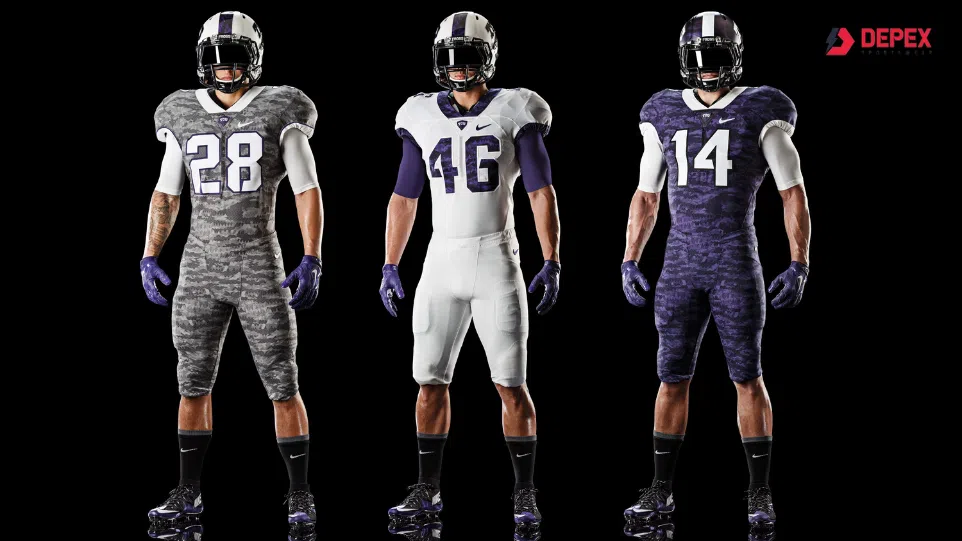Tulane Football Uniforms – Style and Tradition Guide

Tulane Green Wave has long been associated with football pride since the clothes worn by the team are traces of its historical development and its changes. The new uniforms present the tradition of innovation and a new team spirit through the years.
Explore the rich annals of Tulane Green Wave football jerseys and check out the team uniforms worn during different periods. Depex Sportswear reveals the historical progression of these towering uniforms and embraces the heritage of one of college football’s most iconic teams.
What Is It About the Uniform of Tulane Football?
Tulane football symbolizes the athletic image of the Green Wave, the football team of Tulane University. These uniforms have their look, with logos and symbols that reflect the affinity and tradition of the University of Tulane, where the respective colors of olive green, sky blue, and white are used.
History of Tulane Football Sportswear
Early Years (1893-1920s): The Tulane University football team had its fair share of classic shirt and shorts wardrobe for many years.
1930s-1950s: With the years, the uniforms evolved with more vibrant colours and distinctive patterns. The iconic Green Wave logo started appearing, symbolizing the team’s spirit.
Modern Era (1960s-Present): Over the last several decades, Tulane has been modifying the appearance of its uniforms to incorporate modern technology and materials for optimal performance, sturdiness, and breathable fabrics. They have also, at times, tried out a new helmet style and novel colors for their uniforms to maintain fashion in sportswear.
Signature Design: The Green Wave helmet, which features a green wave design, has represented Tulane’s football teams through their uniforms. Although the uniforms’ design has evolved, they still feature this signature wave symbol prominently.
How to Design Tulane Football Uniforms
Designing Tulane football uniforms involves creating a set encompassing the university’s background, school pride, and current athletics requirements. Here’s a step-by-step guide to the design process:
1. Research the Brand Identity
- Colors: Tulane’s official colors are olive green, sky blue, and white. These colors should be used in design since non-uniformity compromises the integrity of the team’s brand image.
- Logo: The Green Wave logo, an element of the Tulane branding, must be visible, occupy the bulk of the helmet, and potentially be placed on the jersey.
- Heritage: To celebrate tradition, some objects representing the team’s history, like old logos, should be allowed.
2. Choose the Fabric and Material
- Performance Fabric: Different fabric materials should be used, such as light polyester fabric that provides breathability, effectively absorbs sweat, and is easy to wash.
- Durability: The fabric must withstand vigorous physical activity and unfavourable weather conditions and still look its best.
3. Design the Jersey
- Cut and Fit: Football jerseys must allow freedom of movement. Choose a fit that balances comfort with flexibility, allowing athletes to perform their best.
- Design Elements: Add sleek, modern lines to the design while keeping classic elements like stripes or piping. Experiment with panel designs and mesh areas for breathability.
4. Design the Helmet
- Iconic Look: The helmet should feature the Green Wave logo in a bold, visible location. Experiment with glossy or matte finishes and add a wave design or pattern representing the team’s nickname.
- Safety: Prioritize head protection with modern helmet designs that meet safety standards.
5. Incorporate Special Features
- Alternate Uniforms: Include designs for alternate uniforms, such as a throwback look, a unique game uniform, or a white-out or blackout uniform for big matchups.
- Personalization: Allow space for player numbers, names, and other customizations.
6. Team Collaboration and Feedback
Involve coaches, players, and staff in the design process to ensure the uniform looks good and meets their performance needs. Test prototypes to get feedback on comfort, fit, and functionality.
7. Final Design Approval
Once the design is refined, it should be given final approval from university officials and athletic department leaders before manufacturing. This ensures that the uniforms align with the school’s values, branding guidelines, and athletic performance standards before producing them for the team.
Want Custom-Made Design for Uniforms of Tulane Football?
Despite being our custom football jerseys, we aim to find the right fabric for DEPEX Sportswear that will be comfortable and productive. Leather is durable and flexible fur—Lycra with a GSM ranging from 300 to 350 makes our cloth materials durable and adaptable. Lycra offers free mobility, and mesh fabric enables adequate airflow to ensure players do not overheat during vigorous events.
We provide affordable customized jerseys and shorts to professional teams, school teams and club teams for both juniors and seniors. There are moisture control fabrics to ensure the players’ bodies remain dry; moreover, the blank jerseys can be bulked and bought for resale by wholesalers.
Our company specializes in sublimated football jerseys and guarantees that our kits are crafted to the highest quality standards. Contact us today to talk with one of our team specialists about your team’s needs, and let us help you create the best custom solution to take your game to the next level.
Conclusion
These football uniforms are timelessly classy, proving the Green Wave’s spirit while not being afraid of innovation. Though having an obscure beginning, the uniforms have now embraced the university’s ideals of sports and tradition.
Tulane football uniforms manufactured by Depex Sportswear pay homage to the team’s history while incorporating all modern requirements concerning the production of sportswear.
Whether you are part of the Tulane family or looking to honor this iconic team, we are here to help bring the Green Wave’s spirit to life with custom uniforms designed for performance and tradition.


